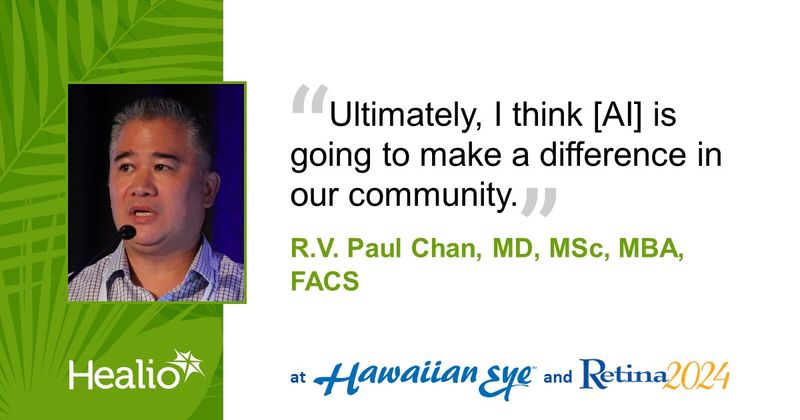Regulatory, access issues should be addressed for AI in diabetic retinopathy screening
Click Here to Manage Email Alerts
WAILEA, Hawaii — Artificial intelligence for diabetic retinopathy screening can be a valuable tool, but regulatory issues still need to be addressed, according to a speaker here.
“AI is not so dissimilar from therapeutics in terms of the regulatory process and what we have to go through,” R.V. Paul Chan, MD, MSc, MBA, FACS, said at Retina 2024. “For example, if you have a new pharmacotherapy, you have to make sure it goes through all of the steps, including clinical trials, to make sure it is safe and effective. It is no different for these AI algorithms.”

To move forward with implementation of these AI algorithms, Chan said it is important to expand the workforce for screening and treatment. Follow-up care and workflows should also be considered, in addition to financial models and cost-effective care.
Potential gaps in health equity need to be overcome. In pursuit of this goal, the AAO Task Force on Ophthalmology and Community Health Centers is working to establish metrics for better eye care delivered via federally qualified health centers. The organization also aims to identify best practices to expand ophthalmology services in these centers by addressing partnerships, resources, operations and sustainability.
“Think about engaging with your human-centered design and implementation science programs,” Chan said. “I think they are very helpful. Ultimately, I think [AI] is going to make a difference in our community.”

